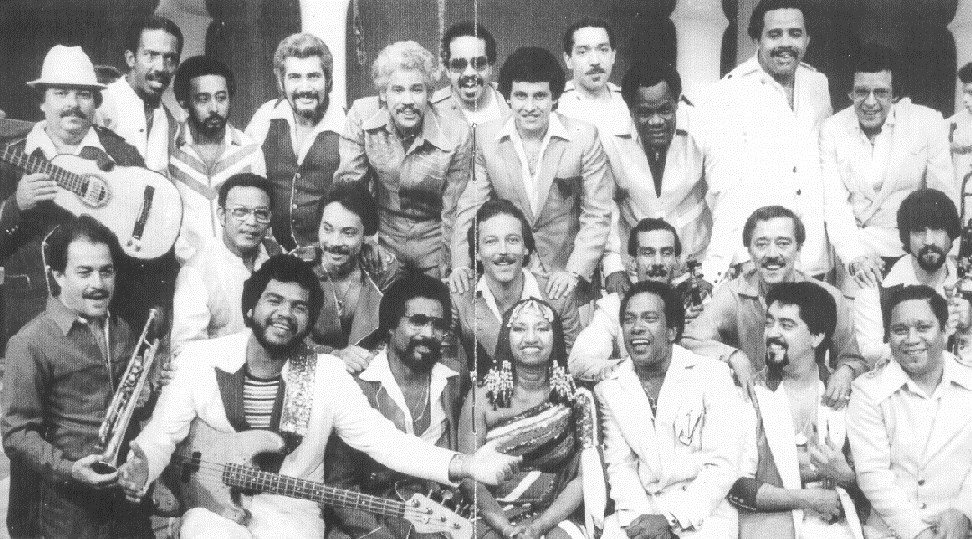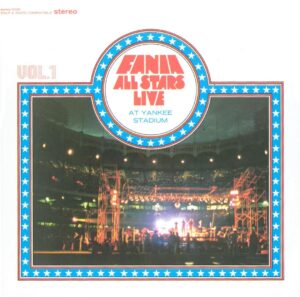Salsa music is a genre of music, generally defined as a modern style of playing Cuban Son, Son Montuno, and Guaracha with touches from other genres of music. Originally, Salsa was not a rhythm in its own right, but a name given in the 1970s to various Cuban-derived genres, such as Son, Mambo and Son Montuno.
We are highlighting Roberto Clemente Coliseum as one of the birthplaces of Salsa in Puerto Rico because when it opened, it’s first concert was a legendary performance by the Fania All-Stars. It was the location where one of the landmark albums that celebrated and popularized salsa around the world was performed. The list of musicians and singers on this live LP, which came out in 1975 and was recorded at Yankee Stadium in New York and Roberto Clemente Coliseum in San Juan, Puerto Rico was legandary. The line-up reads like a who’s who of ’70s salsa — Ray Barretto, Larry Harlow, Willie Colon, Johnny Pacheco, and Bobby Valentin are among the musicians, and the featured vocalists include Santos Colon on “Soy Guajiro,” Ismael Miranda on “Que Rica Suena Mi Tambor,” and Pete “El Conde” Rodriguez on “Pueblo Latino.” Meanwhile, Hector Lavoe has some joyful moments on his mega-hit “Mi Gente,” and Celia Cruz is in fine form on “Diosa del Ritmo.” (via All Music)
Regarding the genre’s origin, Johnny Pacheco, creator of the Fania All-Stars, who “brought salsa to New York” (of which some members include: Tito Puente, Ray Barretto, Willie Colón, Larry Harlow, Johnny Pacheco, Roberto Roena, Bobby Valentín), explained that “..salsa is and always had been Cuban Music.” Many also consider the Cheetah Club in Manhattan, NY, the birthplace of Salsa.
Popular across Latin America and North America, salsa incorporates multiple styles and variations. Most specifically, however, salsa refers to a particular style developed in the 1960s and ’70s by Cuban and Puerto Rican immigrants to the New York City area, and its later stylistic descendants including 1980s salsa romantica and other sub-genres. The style is now practiced throughout Latin America, and abroad. Salsa derives from the Cuban son and mambo, as the music foundation is based on the Son Clave. The terms Latin jazz and salsa are sometimes used interchangeably; many musicians are considered a part of either (like Tito Puente, Eddie Palmieri, Ray Barretto among others), or both, fields, especially performers from prior to the 1970s.
In the ’70s, Fania Records could be likened to “the Motown of salsa,” and some say it is as important to salsa as Motown was to soul. Fania showcased the biggest names in Afro-Cuban music in the 70’s. Live at Yankee Stadium, Vol. 1 documents a historic moment in Afro-Cuban music when many of the top performers played together in their prime in New York and Puerto Rico. The band was called the Fania All-Stars, and it was a line-up of major-league salseros.
Many believe Salsa is essentially Cuban in stylistic origin, though it also has styles mixed with pop, jazz, and R & B. Salsa is the primary music played at Latin dance clubs and is the “essential pulse of [Latin] music”, according to Ed Morales, while music author Peter Manuel called it the “most popular dance (music) among Puerto Rican and Cuban communities, (and in) Central and South America”, and “one of the most dynamic and significant pan-American musical phenomena of the 1970s and 1980s”. Modern salsa remains a dance-oriented genre and is closely associated with a style of salsa dancing. (via Wikipedia)
There is a large amount of disagreement on the origins of salsa many others believe:
“…the myth that salsa came from Cuba comes from the fact that it has strong elements of Cuban music, especially of the Cuban “Son”, the over zealousness of the Cuban writers that can not come to terms with the fact that some other people took the Cuban Son and other styles and created something as impacting as salsa and the adoption of it into the acts of arriving Cuban performers.
The evidence, however, points in another direction. Not only there is evidence that the elements that gave birth to salsa came together in the late 50’s in places like Santurce, Puerto Rico but there is also ample evidence that the ones that helped to transport it to the international arena were for the most part Puerto Ricans and in particular Puerto Ricans that were from New York or that at a certain point of their life lived in New York. If salsa had originated in Cuba its spread would have been from Miami on out and not from New York on out.” (via Music of Puerto Rico).


